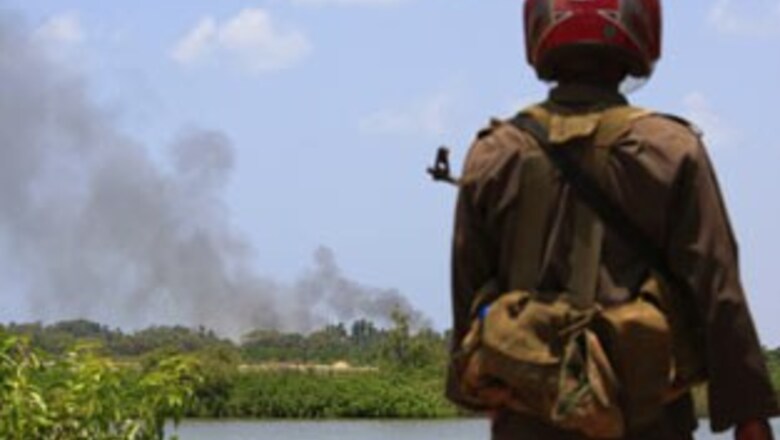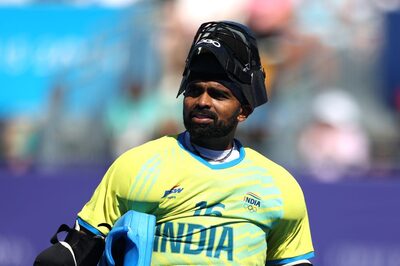
views
Putumattalan (Sri Lanka): Getting to the frontline of the Sri Lankan army's war with the Tamil Tigers entailed a hair-raising helicopter trip over the jungle and a bone-jarring ride past scorched homes to the war zone. Foreign journalists and aid groups have generally been kept away from the area where government troops have battled the Liberation Tigers of Tamil Eelam (LTTE) for months.
On those rare occasions when the government permits a trip to the front, the hazardous journey there and back takes just one day. Yet, as I found out, it could be a world away.
I was among a small group of journalists that took a pre-dawn military flight from Colombo to an airbase near the battle zone where we transferred to helicopters. To avoid any ground fire, the choppers flew at maximum speed just above the height of the tallest trees, and when I say just, I mean scraping the tops of coconut palms.
This fast and furious ride lasted just 30 minutes to the town of Kilinochchi, the Tigers' one-time de facto capital. From there we travelled in a clunky armoured personnel carrier along pot-holed roads that bore testament to the 25-year civil war that has torn apart this Indian Ocean island.
We were thrown around so much as the speeding vehicle hit the craters that I could barely hold my camera up long enough to take photos of the devastation we were passing.
Eventually, I managed to get a few useable frames of a scorched landscape. Every single dwelling was either destroyed or uninhabitable. Burnt-out vehicles lined the road. But what was most noticeable was the absence of people. There were simply no civilians anywhere. Rare Photographs
After what seemed like hours, but was actually one, we reached the ruined town of Putumattalan where we got into jeeps. The troops escorting us became noticeably nervous. They held their guns at the ready, looking alert and intently into the coconut groves as we passed. We must be close now, I thought.
PAGE_BREAK
Eventually we turned a bend in the dirt road and encountered thousands of weary civilians receiving small handouts of food and drink from the soldiers, enough to last them a day or so.
Our military escorts, it seemed, didn't want us around these civilians. After just 5 minutes, we were told to get back into the jeeps as we were headed to the front.
We soon arrived at a place where only days earlier government soldiers had pushed their way through the Tigers' defences, leading to a mass exodus of civilians.
Smoke billowed from less than a kilometre away where, we were told, troops were still fighting. Being so close, our escort now numbered almost 100 heavily armed soldiers. We were severely exposed standing on a road that cut a path through the lagoon. Yet for a full 30 minutes, we photographed what we saw around us.
While walking among scattered clothes and rubbish, I found a packet of film negatives that showed mourners at a funeral. It gave a glimpse of the terrible loss of civilian lives that has taken place out-of-sight of camera lenses and international scrutiny as the government seeks to end the Tigers' fight for an independent homeland for the country's ethnic Tamil minority.
There is no accurate civilian death toll from the fighting, including from being caught in the cross-fire of artillery shells from both sides, but the United Nations has put the number in the tens of thousands. A UN working document says 6,432 civilians have been killed since the end of January alone.
Retracing our perilous journey, we reached Colombo a few hours later. In a single day I had been to the front line of a war in a remote area of Sri Lanka usually banned to coverage by foreign reporters. Exhausted and dripping with sweat, I got to have a hot shower and unwind. But I kept thinking about the people still trapped at the front, enduring the horrors of war in dire conditions and horrendous temperatures, with minimal food, water, medical aid or even shelter.
It seemed strange to be a fleeting visitor to a war zone for just one day when others have had to endure the bitter consequences of the fighting day in and day out for decades. (First hand account by Reuters photographer David Gray)
















Comments
0 comment